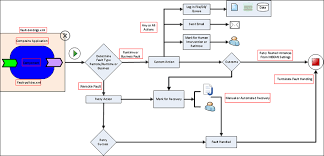In Oracle Data Integrator (ODI), security and user management play a crucial role in controlling access to ODI objects, managing privileges, and ensuring data integration processes are executed securely. Here’s an overview of working with ODI security and user management:
- Authentication and User Creation:
- ODI supports various authentication methods, such as ODI Master Repository, LDAP, and Oracle Single Sign-On (SSO).
- To create users in ODI, you typically need administrative privileges or the appropriate user management rights.
- In ODI Studio, navigate to the Security tab in the Topology Manager.
- Right-click on “Security” and select “New User” to create a new user.
- Specify the user details, including username, password, and other optional attributes.
- Assign appropriate roles and privileges to the user to control their access to ODI objects and functionalities.
- Roles and Privileges:
- Roles in ODI define sets of privileges or permissions that can be assigned to users or groups.
- ODI provides several predefined roles, such as “Administrator,” “Designer,” “Operator,” and “Supervisor.”
- You can also create custom roles based on your specific requirements.
- Privileges in ODI determine the actions that users can perform on ODI objects, such as executing interfaces, designing mappings, or managing scenarios.
- Assign roles and privileges to users or groups using the Security tab in the Topology Manager.
- Object-Level Security:
- ODI allows you to set object-level security to control access to specific ODI objects, such as models, projects, interfaces, or procedures.
- Right-click on an object in ODI Studio and select “Properties.”
- In the “Security” tab, you can specify the users or groups that have read or write access to the object.
- By setting appropriate object-level security, you can ensure that only authorized users can view or modify specific ODI objects.
- Data-Level Security:
- ODI supports data-level security to control access to sensitive data during data integration processes.
- You can implement data-level security using techniques like column-level security, row-level security, or data masking.
- Column-level security: Restricts access to specific columns in tables or views based on user privileges.
- Row-level security: Controls access to rows in tables or views based on user-defined conditions or security policies.
- Data masking: Anonymizes or obfuscates sensitive data to protect sensitive information during data integration.
- Integration with External Security Providers:
- ODI can integrate with external security providers, such as LDAP servers or Oracle Identity Management (OIM).
- Integration with external security providers allows you to leverage existing user management infrastructure and centralize user authentication and authorization.
- You can configure ODI to authenticate users against an LDAP server or use Oracle Identity Management for user management.
By effectively managing security and user access in ODI, you can ensure that data integration processes are executed securely and sensitive data is protected. Controlling authentication, assigning appropriate roles and privileges, implementing object-level security, and leveraging data-level security techniques help enforce data governance and protect the integrity of your data integration environment.
SHARE
